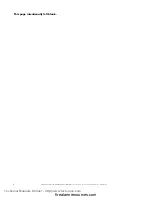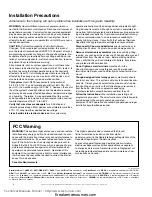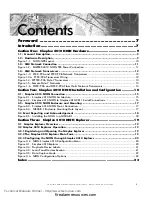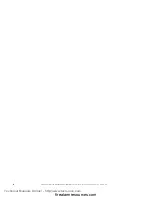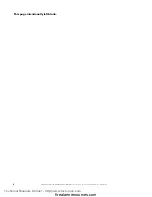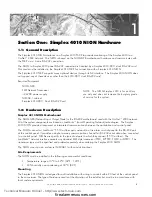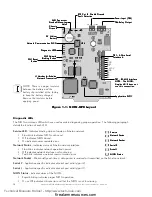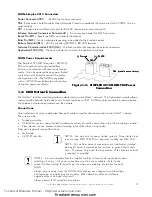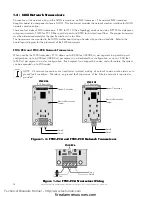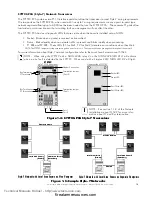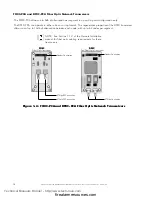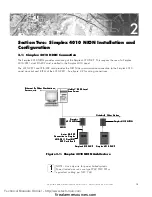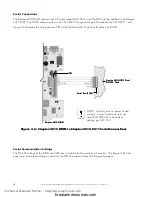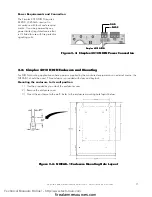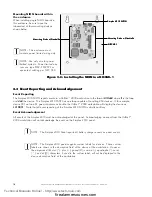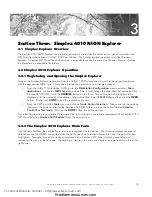
4
Simplex 4010 NION Installation/Operation Manual Version 2 Document 51998 Rev. A1 03/26/03
WARNING -
Several different sources of power can be con-
nected to the fire alarm control panel. Disconnect all sources of
power before servicing. Control unit and associated equipment
may be damaged by removing and/or inserting cards, modules,
or interconnecting cables while the unit is energized. Do not
attempt to install, service, or operate this unit until this manual is
read and understood.
CAUTION -
System Reacceptance Test after Software
Changes. To ensure proper system operation, this product
must be tested in accordance with NFPA 72 Chapter 7 after any
programming operation or change in site-specific software. Re-
acceptance testing is required after any change, addition or de-
letion of system components, or after any modification, repair or
adjustment to system hardware or wiring.
All components, circuits, system operations, or software func-
tions known to be affected by a change must be 100% tested. In
addition, to ensure that other operations are not inadvertently
affected, at least 10% of initiating devices that are not directly
affected by the change, up to a maximum of 50 devices, must
also be tested and proper system operation verified.
This system meets NFPA requirements for operation at
0-49° C/32-120° F
and at a relative humidity of 85% RH - 93%
per ULC - (non-condensing) at 30°
C/86° F. However, the useful
life of the system's standby batteries and the electronic compo-
nents may be adversely affected by extreme temperature ranges
and humidity. Therefore, it is recommended that this system
and all peripherals be installed in an environment with a nominal
room temperature of 15-27° C/60-80° F.
Verify that wire sizes are adequate for all initiating and
indicating device loops. Most devices cannot tolerate more than
a 10% I.R. drop from the specified device voltage.
Like all solid state electronic devices, this system may
operate erratically or can be damaged when subjected to light-
ning-induced transients. Although no system is completely im-
mune from lightning transients and interferences, proper ground-
ing will reduce susceptibility.
Overhead or outside aerial wiring
is not recommended, due to an increased susceptibility to
nearby lightning strikes. Consult with the Technical Services
Department if any problems are anticipated or encountered.
Disconnect AC power and batteries prior to removing or in-
serting circuit boards. Failure to do so can damage circuits.
Remove all electronic assemblies prior to any drilling, filing,
reaming, or punching of the enclosure. When possible, make all
cable entries from the sides or rear. Before making modifica-
tions, verify that they will not interfere with battery, transformer,
and printed circuit board location.
Do not tighten screw terminals more than 9 in-lbs.
Over-tightening may damage threads, resulting in reduced
terminal contact pressure and difficulty with screw terminal re-
moval.
Though designed to last many years, system components
can fail at any time. This system contains static-sensitive com-
ponents. Always ground yourself with a proper wrist strap be-
fore handling any circuits so that static charges are removed
from the body. Use static-suppressive packaging
to protect electronic assemblies removed from the unit.
Follow the instructions in the installation, operating, and
programming manuals. These instructions must be followed to
avoid damage to the control panel and associated
equipment. FACP operation and reliability depend upon proper
installation by authorized personnel.
WARNING: This equipment generates, uses, and can radiate
radio frequency energy and if not installed and used in accor-
dance with the instruction manual, may cause interference to
radio communications. It has been tested and found to com-
ply with the limits for class A computing device pursuant to
Subpart B of Part 15 of FCC Rules, which is designed to pro-
vide reasonable protection against such interference when
operated in a commercial environment. Operation of this
equipment in a residential area is likely to cause interference,
in which case the user will be required to correct the interfer-
ence at his own expense.
Canadian Requirements
This digital apparatus does not exceed the Class A
limits for radiation noise emissions from digital
apparatus set out in the Radio Interference Regulations of the
Canadian Department of Communications.
Le present appareil numerique n'emet pas de bruits radio-
electriques depassant les limites applicables aux appareils
numeriques de la classe A prescrites dans le Reglement sur
le brouillage radioelectrique edicte par le ministere des Com-
munications du Canada.
FCC Warning
Installation Precautions
Adherence to the following will aid in problem-free installation with long-term reliability:
Precau-L-4-2002.p65
Acclimate Plus™, HARSH™, NOTI•FIRE•NET™, ONYX™, and VeriFire™ are trademarks, and FlashScan® and VIEW® are registered trademarks of NOTIFIER.
NION™ and UniNet™ are trademarks of NIS. NIS™ and Notifier Integrated Systems™ are trademarks and NOTIFIER® is a registered trademark of Fire•Lite
Alarms, Inc. Echelon® is a registered trademark and LonWorks™ is a trademark of Echelon Corporation. ARCNET® is a registered trademark of Datapoint
Corporation. Microsoft® and Windows® are registered trademarks of the Microsoft Corporation. LEXAN® is a registered trademark of GE Plastics, a subsidiary
of General Electric Company.
Technical Manuals Online! - http://www.tech-man.com
firealarmresources.com


